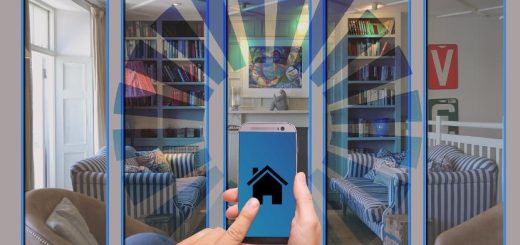Exploring the Future: How Virtual and Augmented Reality are Revolutionizing Education, Entertainment, and Healthcare
Transforming Education: A New Era of Learning
The traditional classroom is evolving, thanks to the integration of VR and AR technologies. These innovations provide immersive learning experiences that go beyond textbook learning and static lectures.
Virtual Reality creates a fully immersive environment where students can engage with content in a three-dimensional space. Imagine a history lesson where students can walk through ancient Rome, experiencing its architecture and daily life firsthand. VR can bring historical events to life, making them more tangible and memorable. It also allows for simulations in subjects like chemistry, where students can conduct virtual experiments without the risks associated with real-life lab work.
Augmented Reality, on the other hand, enhances the real-world environment by overlaying digital information. AR can turn any space into a dynamic learning environment. For instance, a biology student can use an AR app to view and interact with 3D models of human anatomy projected onto a physical skeleton. This kind of interactive learning helps in visualizing complex concepts and can be particularly beneficial in subjects requiring spatial understanding.
Moreover, VR and AR are breaking down geographical barriers in education. Students from around the world can now participate in virtual field trips, attend lectures by international experts, and collaborate with peers from different cultures without ever leaving their classrooms. This level of engagement and accessibility is unprecedented and could lead to more equitable educational opportunities globally.
Revolutionizing Entertainment: Beyond the Screen
In the realm of entertainment, VR and AR are creating experiences that were previously confined to the realm of imagination. These technologies offer a new dimension to how we experience games, movies, and interactive media.
Virtual Reality provides gamers with a fully immersive experience, allowing them to step into a different world and interact with it in ways that were not possible with traditional gaming setups. VR gaming environments are not just about visual immersion but also about physical interaction, where players can use motion controllers to manipulate objects and navigate through virtual spaces. This level of immersion creates a more engaging and exhilarating gaming experience.
Augmented Reality, on the other hand, enhances real-world environments with interactive digital elements. AR games like Pokémon GO have already shown the potential of blending virtual characters with physical surroundings. Players can catch Pokémon that appear to be in their local parks or streets, creating a unique blend of physical and digital gameplay. AR can also enhance movie-watching experiences by adding interactive elements to film scenes or enabling viewers to interact with characters and storylines in real-time.
In addition to games and movies, AR is transforming live entertainment. Concerts and sports events can now feature augmented elements that enhance the live experience, such as interactive stage effects or real-time statistics displayed over the action. This not only adds an extra layer of excitement but also allows for a more personalized experience, as spectators can choose which elements to interact with based on their preferences.
Revolutionizing Healthcare: A New Frontier in Treatment and Training
The impact of VR and AR in healthcare is profound, offering new tools for both medical training and patient treatment.
Virtual Reality is making strides in medical training by providing realistic simulations of surgical procedures and patient care scenarios. Medical students and professionals can practice complex surgeries in a risk-free environment, honing their skills and gaining experience before performing procedures on real patients. VR also offers opportunities for mental health treatment, such as exposure therapy for patients with phobias or post-traumatic stress disorder (PTSD). By simulating fear-inducing situations in a controlled virtual environment, therapists can help patients confront and manage their fears gradually.
Augmented Reality is enhancing surgical precision and patient care. Surgeons can use AR to overlay critical information, such as patient anatomy or real-time imaging, directly onto their field of view during operations. This integration of digital information into the physical world can improve accuracy and reduce the likelihood of errors. AR can also assist in medical education by providing interactive overlays on anatomical models or live patient data, facilitating a deeper understanding of complex medical concepts.
Additionally, AR applications are being developed to support rehabilitation. For instance, AR can be used to create engaging and motivating physical therapy exercises by integrating game-like elements into the rehab process. This not only makes therapy more enjoyable but can also improve patient adherence and outcomes.
Conclusion
Virtual and Augmented Reality are more than just technological novelties; they are powerful tools that are redefining education, entertainment, and healthcare. In education, they provide immersive and interactive learning experiences that enhance understanding and engagement. In entertainment, they offer new dimensions of interaction and immersion that enrich our leisure activities. In healthcare, they improve training, precision, and patient care, paving the way for advancements in treatment and rehabilitation.
As these technologies continue to evolve, their potential applications are likely to expand further, offering even more innovative solutions and opportunities. Embracing VR and AR could well lead to transformative changes in how we approach learning, entertainment, and health, ultimately enriching our lives in ways we are only beginning to explore.

















